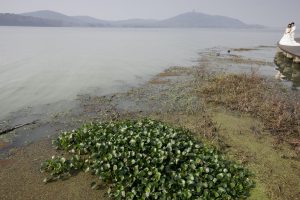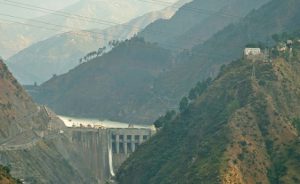Giant pandas in a nature reserve in south-west China have been forced into “smaller and more fragmented” areas after an upsurge in phosphate mining.
Greenpeace and Chengdu-based NGO Hengduan Mountain Research Society investigated the hazards of phosphate mining activities in Longmen Mountain, where giant panda habitat the Nine Peaks Mountain Nature Reserve is located.
A 2006 report from the State Forestry Administration showed that the Nine Peaks Mountain Nature Reserve was home to 11 wild giant pandas. However, Greenpeace campaigner Sean Lang said phosphate mining in the vicinity had destroyed much of the vegetation located in the hinterland of the panda habitat and "forced this local giant panda population into an ever smaller and fragmented area”.
The central part of Longmen Mountain, where the giant panda lives, is China’s fifth largest area for phosphate production and accounts for more than 10% of the nation’s total annual production.
However, despite its huge mineral reserve, the region is seen by many as unsuitable for mining due to its vulnerability to natural disasters, as shown by the major earthquake in Sichuan province this weekend. Yang Yong, Hengduan Mountain Research Society’s senior geological engineer, said further exploitation by mining groups would increase the threat of geological disasters in this disaster-prone area.
"Any phosphate mining in Longmen Mountain must first take into account the risk of secondary disasters. And this area has already suffered major mudslides, landslides and floods in both 2009 and 2010," Yang said.
The mining industry has not been deterred.
In 2010, mining giant Sichuan Hongda Group proposed that the local government change the boundary of the Nine Peaks Mountain Reserve to make way for future mineral extraction.
Initially, the popularity of the panda prevented any boundary changes. However, between 2010 and 2012 phosphate prices rose from less than 100 yuan to more than 500 yuan per tonne. And by August 2012, Sichuan’s provincial government had approved the boundary adjustment application, with the 325-hectare Suopengzi area, the hinterland of giant panda’s habitat, transferred outside the reserve.
Hongda Group, unsurprisingly, gained exploration rights for the new area. But Greenpeace suggests the mining group had began exploration activities in the area in 2008, long before its licence to do so had been validated.
“We don’t know if there’s exchange of interests involved in the decision making, but local governments tend to support projects that are good for short-term economic growth and GDP growth. Therefore, they are willing to support mining projects which could encroach on the giant panda habitat at the cost of environmental protection,” said Sean Lang.




